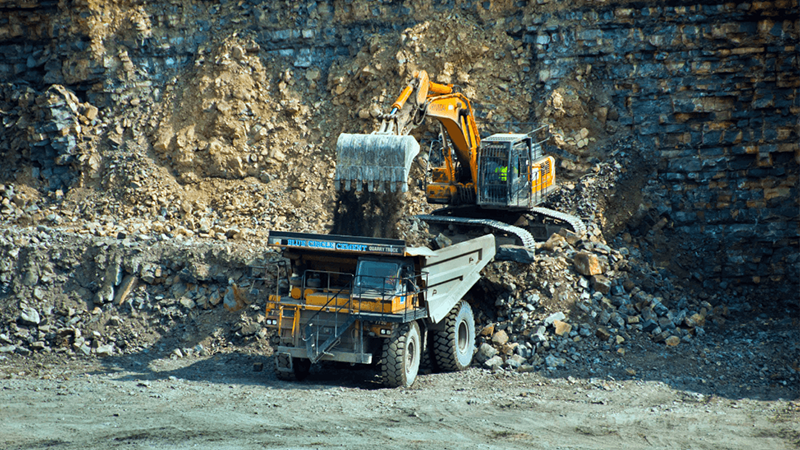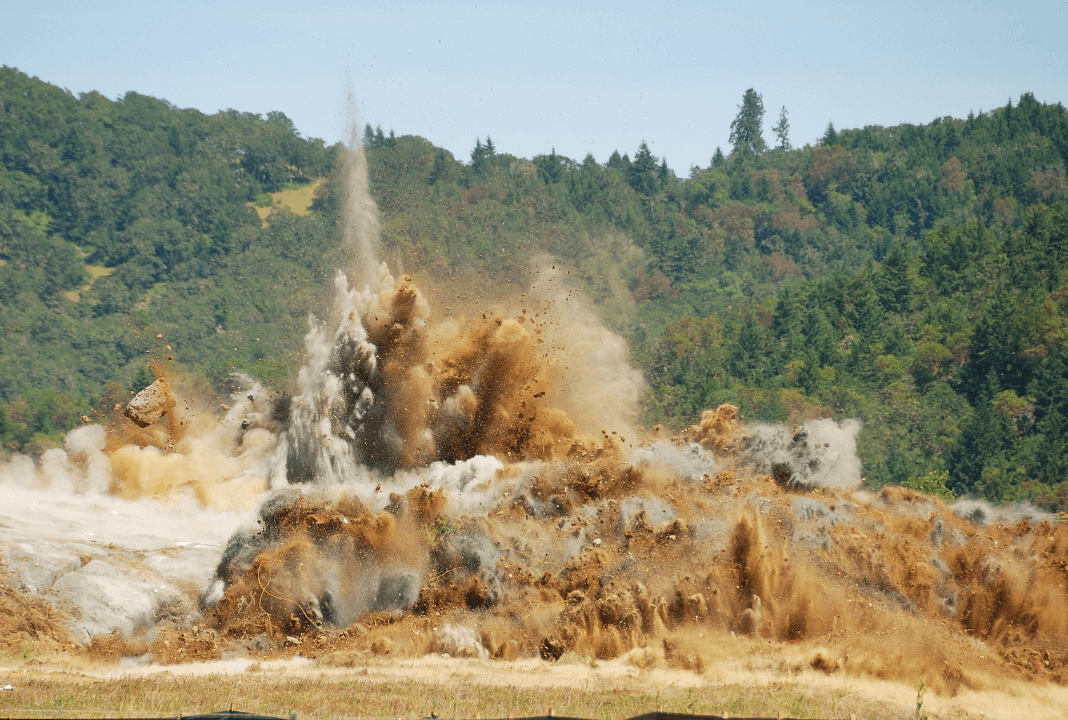How Hard Is It To Excavate in Rock?

How hard is it to excavate in rock? Unlike soil, rock requires specialized equipment like drum cutters to break through tough materials such as granite and limestone.
These tools are crucial in construction and mining projects, enabling the preparation of sites for infrastructure development and major engineering feats. Rock excavation demands precise planning and the right equipment due to its complexity and cost.
This blog explores the challenges of rock excavation, the methods used, and the necessary equipment. You'll gain practical insights to help contractors, engineers, and construction professionals effectively tackle even the toughest rock excavation tasks.
Key Takeaways
- Rock excavation at a construction site requires specialized equipment and methods to handle the hardness and density of rock formations, impacting project timelines and costs.
- Utilizing tools like excavators, drum cutters, and controlled blasting ensures efficient rock removal and minimal disturbance on construction projects.
- RockZone America offers innovative tools and techniques to tackle the toughest challenges efficiently.
What is Rock Excavation?
Rock excavation involves actively removing rock from a construction site using specialized techniques and equipment. This process is essential for construction projects that require stable foundations, such as bridges, tunnels, and large buildings.
Unlike common excavation, which deals with softer soil, rock excavation breaks through hard and soft rocks like granite, sandstone, and limestone to reach the required depth. The task demands larger, more powerful excavating equipment and mechanical methods to handle the challenges posed by rock masses effectively.
Rock excavation vs. soil excavation
The primary difference between rock and soil excavation lies in their properties. Rocks have higher compressive stress and are more cemented than soil, making them significantly harder to dig through.
Hard rocks like granite require powerful tools, such as hoe rams and rock trenchers, to break them into smaller, manageable pieces. Even soft rocks need precise handling to manage rock layers and fragments.
The Complexities of Rock Excavation

Breaking through hard rock and cemented materials requires specialized equipment and skilled operators. Excavating rock is much more complex than dealing with soil types because rocks are tougher, denser, and more resistant to traditional digging methods.
Difficulty and complexity
Rock is much stronger and denser than soil, making it harder to penetrate. This section highlights the specific challenges and complexities involved in rock excavation.
Strength and density
Hard rocks like granite and limestone create significant obstacles. Excavating these materials demands larger equipment and powerful mechanical means to break through the rock face.
Time and cost
Contractors use tools such as rock trenchers and hoe rams to break down solid materials into smaller pieces. Calculating the cubic yards of rock mass that need removal is crucial, as the amount of rock significantly impacts the project's cost and timeline.
Factors influencing rock excavation
The success of rock excavation hinges on several key factors. From the composition of rock layers to the assessment tools used, understanding these elements is vital for effective planning and execution of excavation projects.
Rock layers and mass
Sites with thicker, more densely packed rock layers demand more powerful equipment and precise techniques to break through and remove the rock.
Contractors must carefully consider the type of rock—whether it’s hard rock or soft rock—as this affects the choice of equipment and methods required to manage rock fragments and ensure successful rock removal.
Assessment tools
Boring logs and test pits reveal the depth and composition of subsurface materials, helping contractors pinpoint rock layers and fragments.
This data guides the selection of excavation techniques and equipment and determines if the job requires blasting. Accurate assessment ensures that contractors can tackle the project efficiently and cost-effectively.
Soil strata and rock types
Hard rock layers demand more powerful equipment and specialized techniques to penetrate, while soft rock, although easier to excavate, still requires careful handling and suitable tools.
Analyzing these factors allows contractors to optimize their approach to rock excavation, which minimizes delays and ensures project success.
Approaches to Rock Excavation

Rock excavation demands precise planning and specialized techniques to manage the tough materials found at construction sites. Each method, whether involving advanced machinery or controlled explosions, offers distinct advantages and challenges.
Mechanical methods
Mechanical methods are the most common approach for rock removal at a construction site. Contractors rely on excavating equipment larger than standard tools, including excavators, bulldozers, and rock trenchers, to dig through rock masses.
These machines use powerful attachments, such as hoe rams and drum cutters, to break rock into smaller, manageable pieces. This approach is especially useful for projects where blasting might be too risky or impractical.
- Excavators: These machines use the hoe ram attachment to efficiently break apart solid rock and boulders. They are crucial for quickly removing rock in projects that require precision.
- Bulldozers: Used alongside rock trenching, bulldozers move large amounts of material and break the surface layer of rock. They are ideal for clearing construction sites and preparing the ground for further excavation.
- Rock trenchers: Designed to cut through rock layers with precision, rock trenchers excel in digging trenches for utilities and foundations. They help contractors efficiently remove rock fragments and keep construction projects on schedule.
Blasting techniques
When mechanical means alone are not enough, blasting provides an alternative method for rock excavation.
Blasting involves using explosives to break the rock into smaller pieces, making it easier to remove from the site. This method is often required in situations where rock layers are particularly thick or when there is a large volume of rock to be removed.
The blasting process
Blasting requires careful planning to ensure that the right amount of explosive is used for each cubic yard of rock mass.
Contractors must assess the depth limitation and determine how much rock needs to be removed. Drill bits are used to create holes in the rock where explosives are placed. Once detonated, the rock is broken apart and can be easily excavated.
Safety concerns and legal restrictions
Contractors must adhere to strict regulations and guidelines to protect workers and nearby structures. Legal restrictions may limit where and when blasting can occur, which can impact the project timeline.
Equipment for Rock Excavation
Rock excavation requires specialized tools and machinery to effectively break down and remove tough materials at construction sites. RockZone America provides a range of innovative equipment designed to tackle the challenges of rock excavation efficiently.
Common tools and machinery
RockZone America's equipment line is engineered to handle the strength and density of rock formations, ensuring efficient excavation on a construction project:
Rockwheel
The Rockwheel is a powerful rotary drum cutter designed to cut through hard rock and concrete.
This tool is ideal for trenching, tunneling, and scaling, offering precise cutting with minimal vibration and noise. It allows contractors to remove rock efficiently while minimizing disturbance to the surrounding area.
Rockcrusher
The Rockcrusher attachment is used to crush rock into smaller, manageable pieces. This tool is perfect for construction projects that require the processing of rock into aggregate material, enabling on-site recycling and reducing the need for transporting rock offsite.
Rockscreener
The Rockscreener is designed to separate rock and other debris from soil, improving the quality of fill material and preparing the site for further construction work. It enhances efficiency by quickly sorting materials, making it easier to manage rock removal and reuse.
Streamline Your Excavation Projects with RockZone America
Excavating rock can be a major challenge and a time-consuming part of any construction project.
Dealing with stubborn bedrock or massive boulders often requires specialized equipment to break the material into smaller pieces. This process can delay timelines and increase costs, making efficient solutions essential.
RockZone America provides innovative attachments like Rockwheels and Rockcrushers that handle even the toughest rock. These tools make rock trenching and rock removal efficient and manageable.
Don’t let rock slow down your project—call RockZone America today to streamline your excavation process.
Summary
Rock excavation poses unique challenges due to the strength and density of materials like granite and limestone.
Proper planning and assessment are crucial for overcoming these obstacles and ensuring successful rock removal. Using advanced tools such as hoe rams and rock trenchers, contractors can efficiently manage construction sites and streamline project timelines.
RockZone America delivers expert solutions and cutting-edge equipment for all your rock excavation needs. With tools like Rockwheels and Rockcrushers, they help contractors tackle even the toughest construction project.
Frequently Asked Questions
How to excavate hard rock?
Excavating hard rock involves specialized techniques and equipment to effectively break through tough materials like granite and limestone.
Contractors often use heavy machinery, such as excavators equipped with hoe ram attachments or rotary drum cutters, to dig and break the rock into smaller pieces. Blasting techniques may also be employed when dealing with dense rock layers.
Precise planning and assessment using boring logs help determine the best methods for removing rock efficiently from a construction site.
How hard is it to excavate?
Excavating rock is significantly harder than excavating soil due to its strength, density, and resistance to traditional digging methods. Hard rock, like granite, requires powerful equipment to break it into smaller pieces.
The complexity of the excavation process often increases project timelines and costs, making it crucial to use specialized machinery and expert planning.
How is rock excavation done?
Rock excavation is done by using specialized machinery such as excavators, rock trenchers, and bulldozers equipped with attachments like hoe rams and drum cutters. Contractors may also use controlled blasting to break large rock masses into smaller pieces.
The process begins with assessing the site using boring logs to determine the depth and type of rock, followed by selecting appropriate methods to efficiently dig and remove rock while minimizing disturbances.
Can you dig through rock?
Yes, you can dig through rock using specialized equipment and techniques designed to handle the hardness and density of rock formations.
Machines like excavators with powerful attachments and rock trenchers can break and remove rock efficiently. In some cases, controlled blasting may be used to fracture rock into smaller pieces.
